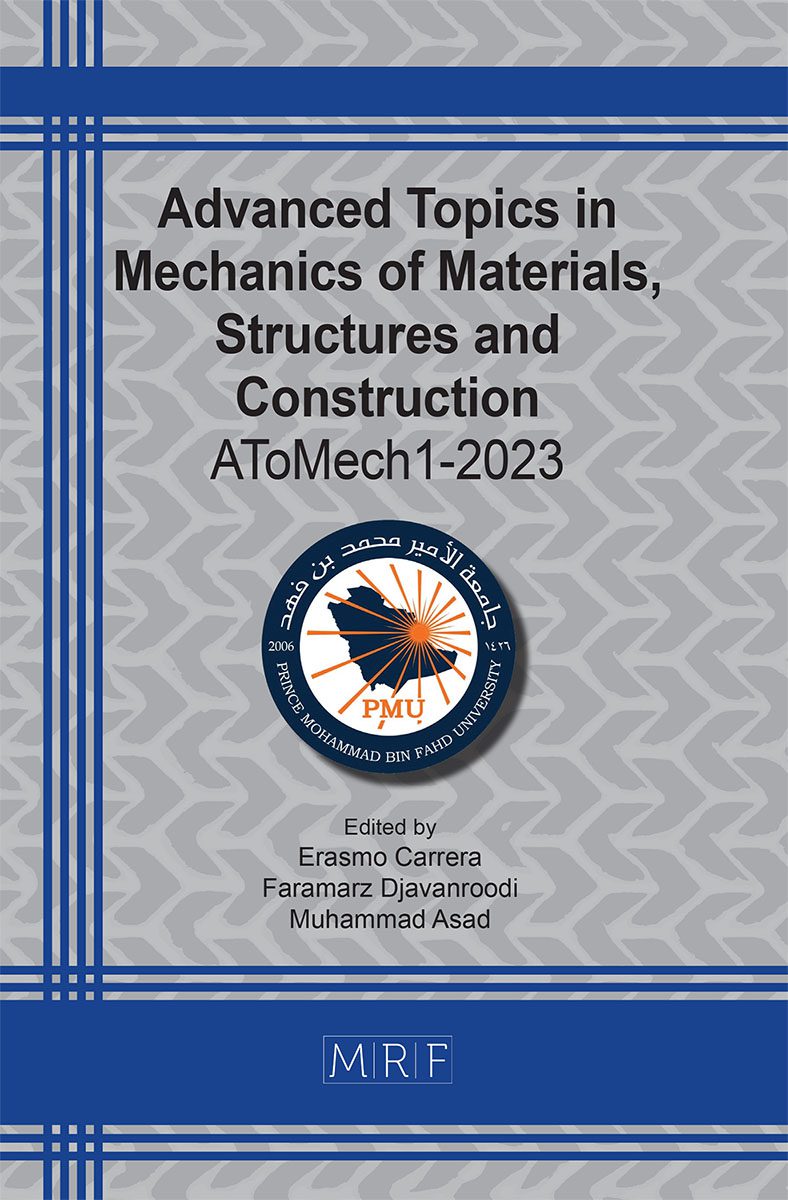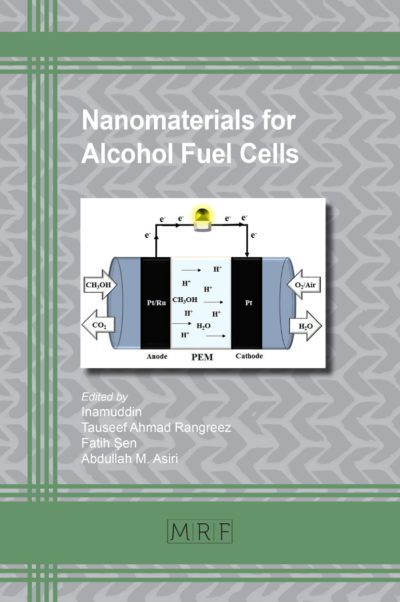Comprehensive review of soil stabilization agents
Batool Al-Shorman, Mousa Bani Baker, Tahar Ayadat
download PDFAbstract. Soil stabilization is a technique that is used in most construction projects to enhance the geotechnical and engineering properties of soil. There is a wide range of research studies related to soil stabilization techniques and agents, these studies discussed the effects of the different types of soil stabilization on soil, the most suitable agent type regarding soil classification, and the challenges that were founded during the application of these processes. Stabilization agents include traditional and non-traditional additives with their different categories were reviewed and discussed in this paper by presenting the results of the recent studies concerned with various types of soil stabilization agents in different laboratories and project tests with highlights on the enhancement of soil properties. In addition to increasing the compressive and shear strength parameters, Maximum Dry Density (MDD), and California Bearing Ratio (CBR) of the soil, the soil stabilization agents play a great role in decreasing the soil plasticity index, swelling, compressibility, porosity, permeability, and Optimum Moisture Content (OMC).
Keywords
Soil, Stabilization, Additives, Traditional Additives, Non-Traditional Additives, Clay, Chemical Additives, Nanomaterials
Published online 8/10/2023, 8 pages
Copyright © 2023 by the author(s)
Published under license by Materials Research Forum LLC., Millersville PA, USA
Citation: Batool Al-Shorman, Mousa Bani Baker, Tahar Ayadat, Comprehensive review of soil stabilization agents, Materials Research Proceedings, Vol. 31, pp 109-116, 2023
DOI: https://doi.org/10.21741/9781644902592-12
The article was published as article 12 of the book Advanced Topics in Mechanics of Materials, Structures and Construction
![]() Content from this work may be used under the terms of the Creative Commons Attribution 3.0 license. Any further distribution of this work must maintain attribution to the author(s) and the title of the work, journal citation and DOI.
Content from this work may be used under the terms of the Creative Commons Attribution 3.0 license. Any further distribution of this work must maintain attribution to the author(s) and the title of the work, journal citation and DOI.
References
[1] Behnood, A. (2018). Soil and clay stabilization with calcium- and non-calcium-based additives: A state-of-the-art review of challenges, approaches and techniques. Transportation Geotechnics. doi:10.1016/j.trgeo.2018.08.002. https://doi.org/10.1016/j.trgeo.2018.08.002
[2] B.V., Rao, V., Reddy, M., Muttharam, 2001. The impact of cyclic wetting and drying on the swelling behaviour of stabilized expansive soils.Eng. Geolo. 60(14), 223-233. https://doi.org/10.1016/S0013-7952(00)00103-4
[3] Z., Nalbantoglu, 2004. Effectiveness of Class C fly ash as an expansive soil stabilizer. Construction and Building Materials 18(6), 377-381. https://doi.org/10.1016/j.conbuildmat.2004.03.011
[4] R.N., Yong, V.R., Ouhadi, 2007. Experimental study on instability of bases on natural and lime/cement-stabilized clayey soils. Applied Clay. https://doi.org/10.1016/j.clay.2006.08.009
[5] Abood, Tamadher T, Anuar Bin Kasa and Zamri Bin Chik, 2007. “Stabilization of Silty ClaySoil Using Chloride Compounds” Int J Eng 2: 102-103.
[6] Habiba, Afrin, 2017. “A Review on Different Types of Soil Stabilization Techniques” Int JTranspEng Tech 3: 19-24. https://doi.org/10.11648/j.ijtet.20170302.12
[7] Phoo-ngernkham T, Hanjitsuwan S, Li L, Damrongwiriyanupap N, Chindaprasirt P, 2018. Adhesion characterisation of Portland cement concrete and alkali-activated binders. Forthcoming in AdvCem Res:1-11.
[8] Saksham, S, Jagdish Y and Rajat P, 2018. “Analysis of Stabilization of Soil Cement for Base of Railway Track and Subgrade” Int J EngRes: 2321-9939.
[9] S.K., Dash, M. Hussain,2011. Lime stabilization of soils: reappraisal. J Mater CivEng 24(6):707-714. https://doi.org/10.1061/(ASCE)MT.1943-5533.0000431
[10] N.C., Consoli, LDS. Jr., Lopes, PDM.,Prietto, L .Festugato, R.C., Cruz, 2010. Variables controlling stiffness and strength of lime-stabilized soils. J GeotechGeoenvironEng 137(6):628-632. https://doi.org/10.1061/(ASCE)GT.1943-5606.0000470
[11] Jha, A. K., &Sivapullaiah, P. V. (2019). Lime Stabilization of Soil: A PhysicoChemical and Micro-Mechanistic Perspective. Indian Geotechnical Journal. doi:10.1007/s40098-019-00371-9. https://doi.org/10.1007/s40098-019-00371-9
[12] Olaniyan, O. S., 2008. Stabilization of kaolinitc soil from Nigeria for construction purposes.Unpublished Soil Stabilization Practical Exercise, Vrije Universiteit Brussels.
[13] Olaniyan, O.S., Olaoye, R.A, Okeyinka, O.M, and Olaniyan, D.B, 2011. Soil Stabilization Techniques Using Sodium Hydroxide Additives. International Journal of Civil & Environmental Engineering IJCEE-IJENS Vol: 11 No: 06.
[14] Bani Baker, M., Elektorowicz, M., Hanna, A. “Electrokinetic nondestructive in-situ technique for rehabilitation of liners damaged by fuels”. Volume 359 (2018), Pages 510-515. https://doi.org/10.1016/j.jhazmat.2018.07.113. https://doi.org/10.1016/j.jhazmat.2018.07.113
[15] Peddaiah, S., Burman, A., &Sreedeep, S. (2018). Experimental Study on Effect of Waste Plastic Bottle Strips in Soil Improvement. Geotechnical and Geological Engineering, 36(5), 2907-2920. doi:10.1007/s10706-018-0512-0. https://doi.org/10.1007/s10706-018-0512-0
[16] A., Langroudi, S., Yasrobi, 2009. A micro-mechanical approach to swelling behavior of unsaturated expansive clays under controlled drainage conditions. Applied Clay Science 45(12), 8-19. https://doi.org/10.1016/j.clay.2008.09.004
[17] Mirzababaei, M., Arulrajah, A., and Ouston, M. (2017). Polymers for Stabilization of Soft Clay Soils. Procedia Engineering, 189, 25-32. doi:10.1016/j.proeng.2017.05.005. https://doi.org/10.1016/j.proeng.2017.05.005
[18] Lin L.Y., Lee J.H., Hong C.E., Yoo G.-H., Advani S.G.,2006. Compos. Sci. Technol. 66: 2116. https://doi.org/10.1016/j.compscitech.2005.12.025
[19] Zainuddin S., Hosur M.V., Zhou Y., Kumar A., Jeelani S.,2010. Mater. Sci. Eng. A; 527: 3091. https://doi.org/10.1016/j.msea.2010.02.022
[20] Bani Baker, M., Abendeh, R., Sharo, A., Hanna, A. (2022) Stabilization of Sandy Soils by Bentonite Clay Slurry at Laboratory Bench and Pilot Scales. Coatings 12 (12). https://doi.org/10.3390/coatings12121922
[21] Srithammaraj, K., Magaraphan, R., &Manuspiya, H. (2011). Modified Porous Clay Heterostructures by Organic-Inorganic Hybrids for Nanocomposite Ethylene Scavenging/Sensor Packaging Film. Packaging Technology and Science, 25(2), 63-72. doi:10.1002/pts.958. https://doi.org/10.1002/pts.958
[22] Sharo, A.A., Khasawneh, M.A., Bani Baker, M., Al Tarawneh, D.M.Sonicated waves procedure effect on stabilizing expansive soil by nano-clay: Treat with cause. Frontiers in Built Environment, 2022, 8, 975993 https://doi.org/10.3389/fbuil.2022.975993
[23] Zaid, H. M., Mohd, R. T., Ibtehaj. T. J., 2014. “Stabilization of Soft Soil Using Nanomaterials”. Research Journal of Applied Sciences, Engineering and Technology.
[24] MI Bani Baker, RM Abendeh, TAS Obaidat. Employing natural bentonite clay as partial replacement of mineral filler in asphalt mixtures. Journal of Materials in Civil Engineering 30 (8), 04018167. https://doi.org/10.1061/(ASCE)MT.1943-5533.0002375
[25] MI Bani Baker, RM Abendeh, MA Khasawneh. Freeze and Thaw Effect on Asphalt Concrete Mixtures Modified with Natural Bentonite Clay, Coatings 12 (11), 1664. https://doi.org/10.3390/coatings12111664
[26] Mousa Bani Baker, Raed Abendeh, Batool Al-Shorman. Density and Strength Performance of Cellular Concrete Blended with Bentonite Clay and Polypropylene Fiber. Key Engineering Materials, 2023, Volume 944. Pages 219-230. https://doi.org/10.4028/p-v85in5

































